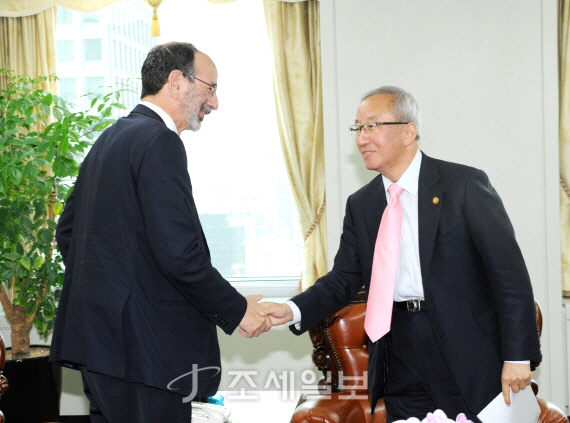Paul Milgrom is a giant, not just in market design, and at 65 he's still going full blast. Here's the
program for his birthday party:
Program: Conference in Honor of Paul Milgrom's 65th Birthday
Location: Landau economics, first floor
Friday, April 19
Introduction to Conference
10:30-10:45 Susan Athey, Yeon-Koo Che and Joshua Gans
Session 1: Market Design Methods in Matching and Auctions
10:45-10:55 a.m. Al Roth: Introduction
10:55-11:25 a.m. John Hatfield: “Matching with Contracts”
11:25-11:35 a.m. coffee break
12:05-12:35 p.m. Paul Klemperer: “Geometry, Auctions, and Matching”
Lunch
12:35-1:35 p.m.
Session 2: Auctions and Market Design
1:35-1:45 p.m. Preston McAfee: Introduction
2:45-3:00 p.m. Coffee Break
3:30-4:00 p.m. Ilya Segal, “U.S. Spectrum Reallocation and Heuristic Auctions,” with Paul Milgrom.
4:00-4:15 p.m. Coffee Break
Panel Discussion: Market Design in Practice
4:15-5:00 p.m. Panel Discussion
Dinner
Vidalakis Dining Room, Schwab Center
6:30 p.m. Appetizers
7:15 p.m. Seated dinner begins serving
Saturday, April 20
Breakfast
9 a.m. at conference site
Session 3: Organizations and Complementarity
9:30-9:40 a.m. John Roberts: Introduction
9:40-10:10 a.m. Nick Bloom: Management and Organizations
10:40-11:00 a.m. Coffee Break
Session 4: Incentives and Games
11:00-11:15 a.m. Bengt Holmstrom: Introduction and Retrospective on Static and Multitask Incentive Theory
11:15-11:45 a.m. Andy Skrzypacz: Repeated games and incentives
11:45-12:15 p.m. Michi Kandori: How to cooperate under private monitoring
12:15-1:15 p.m. Lunch
Time/Location TBD Afternoon Hike
6:30 p.m. Informal Dinner












